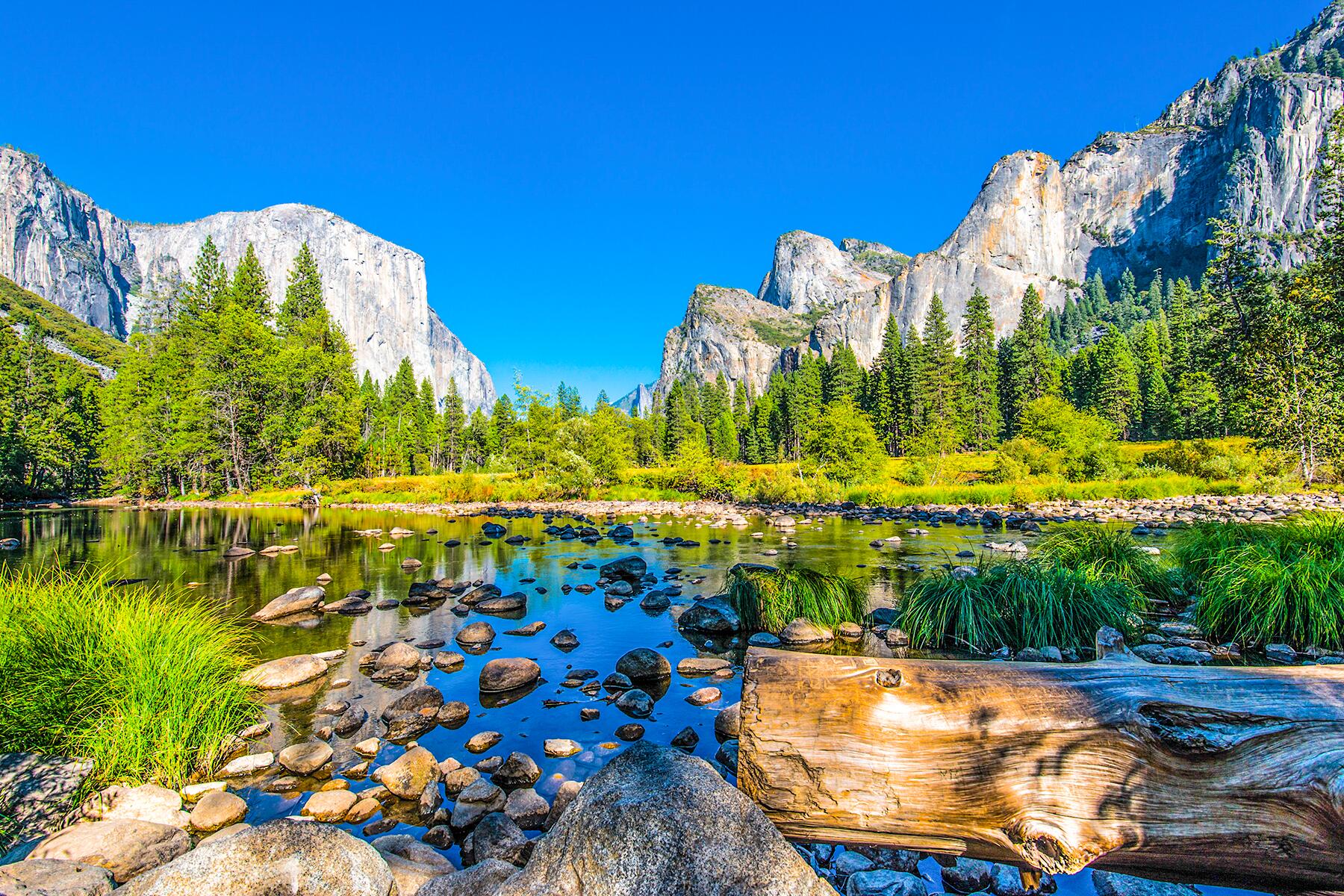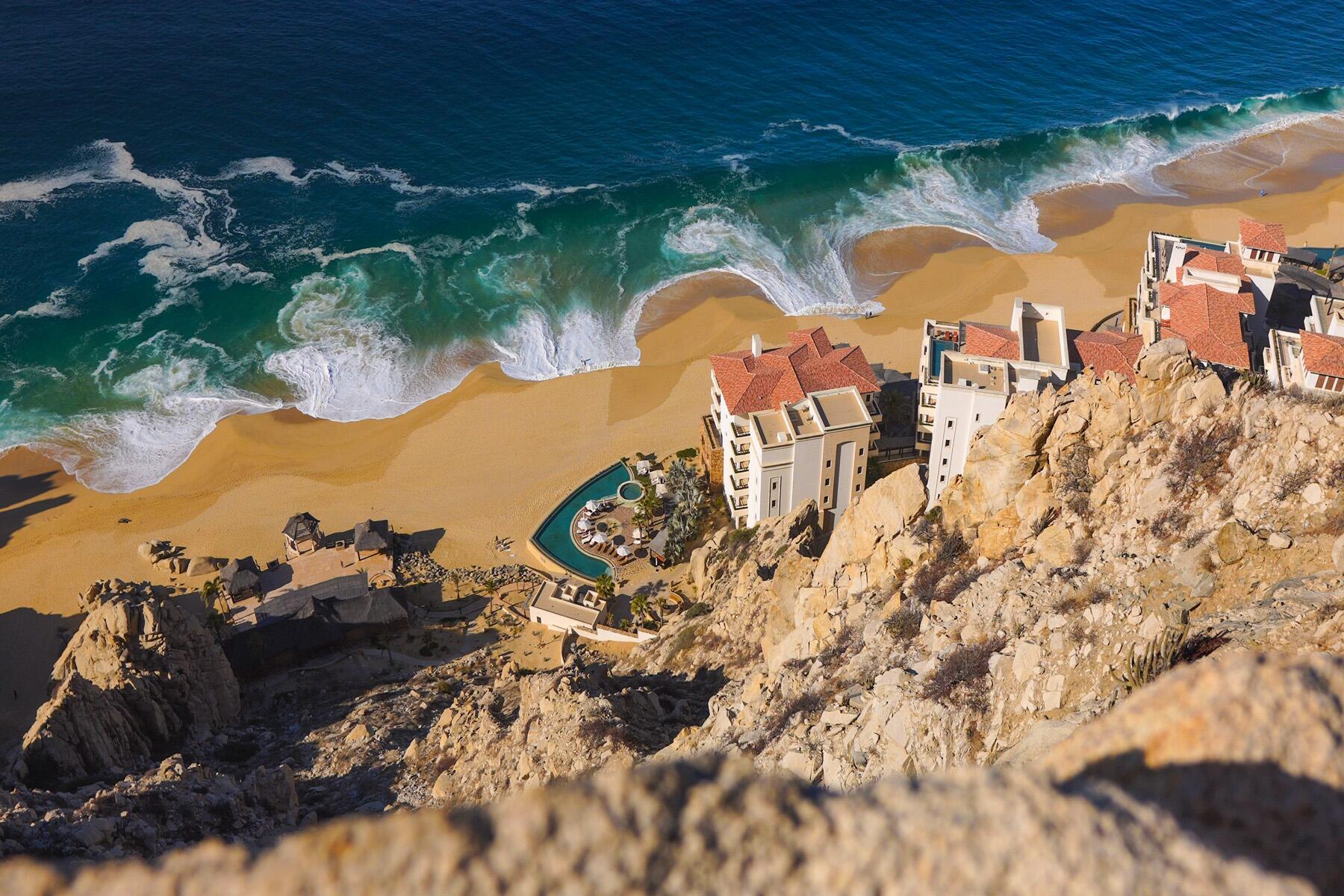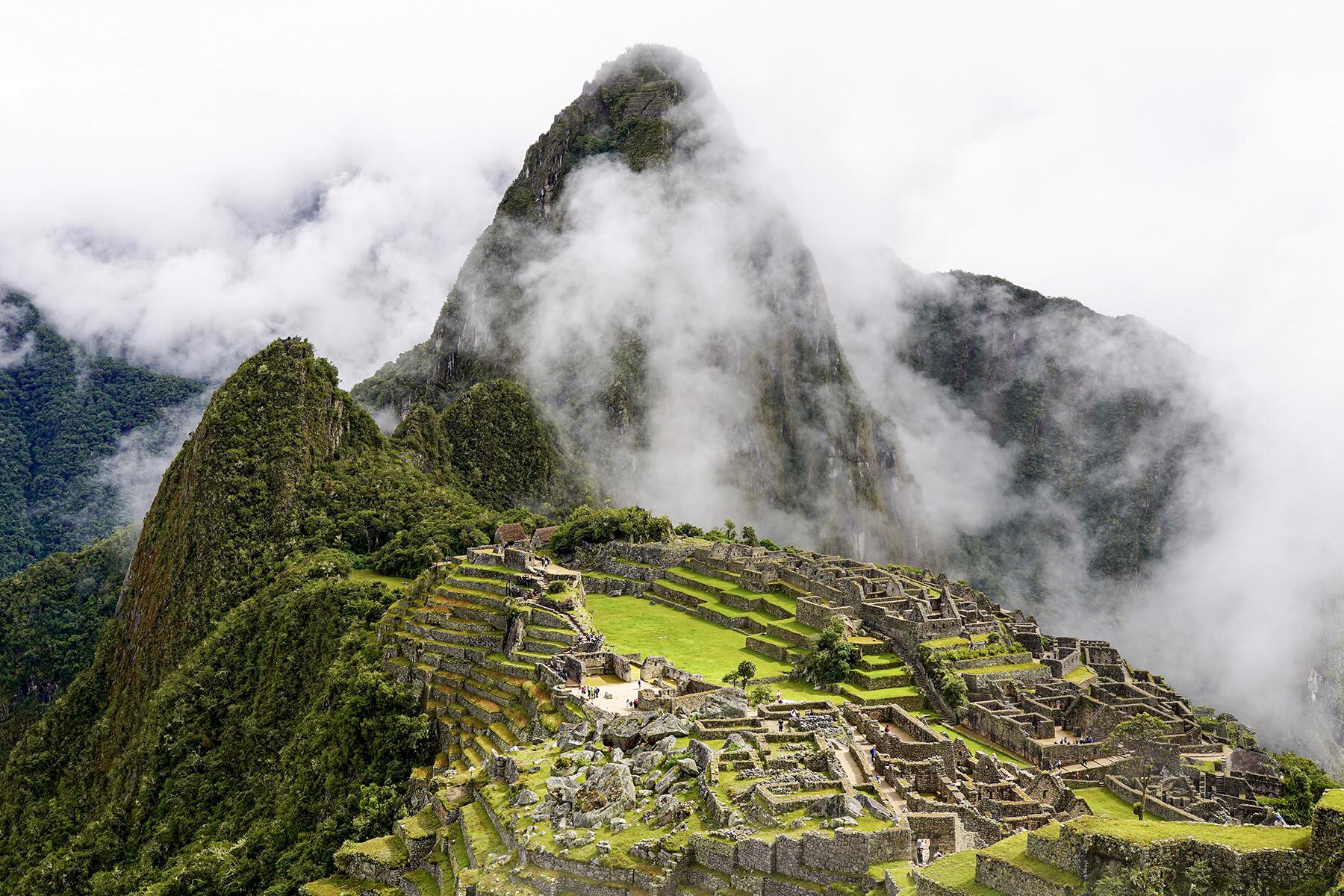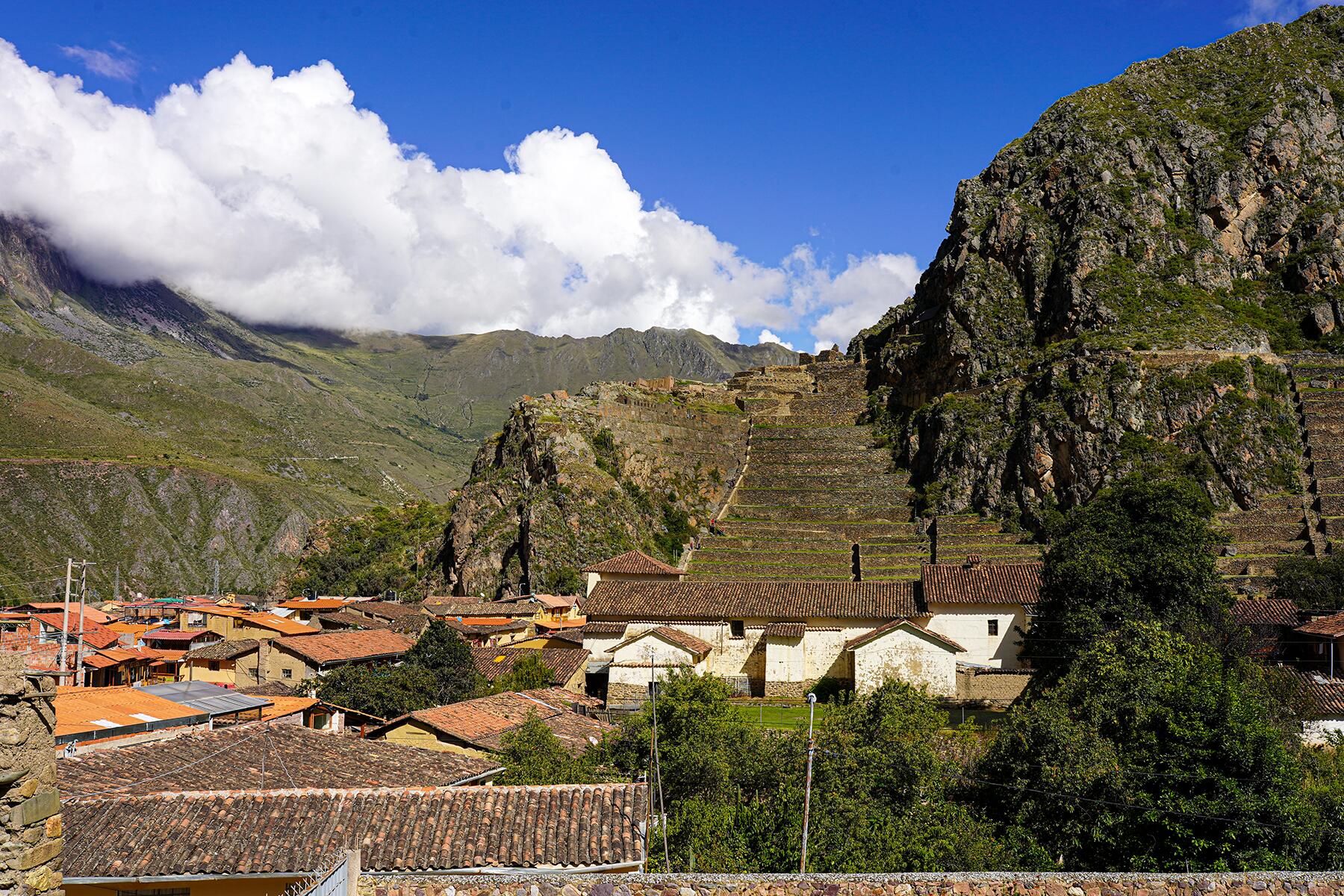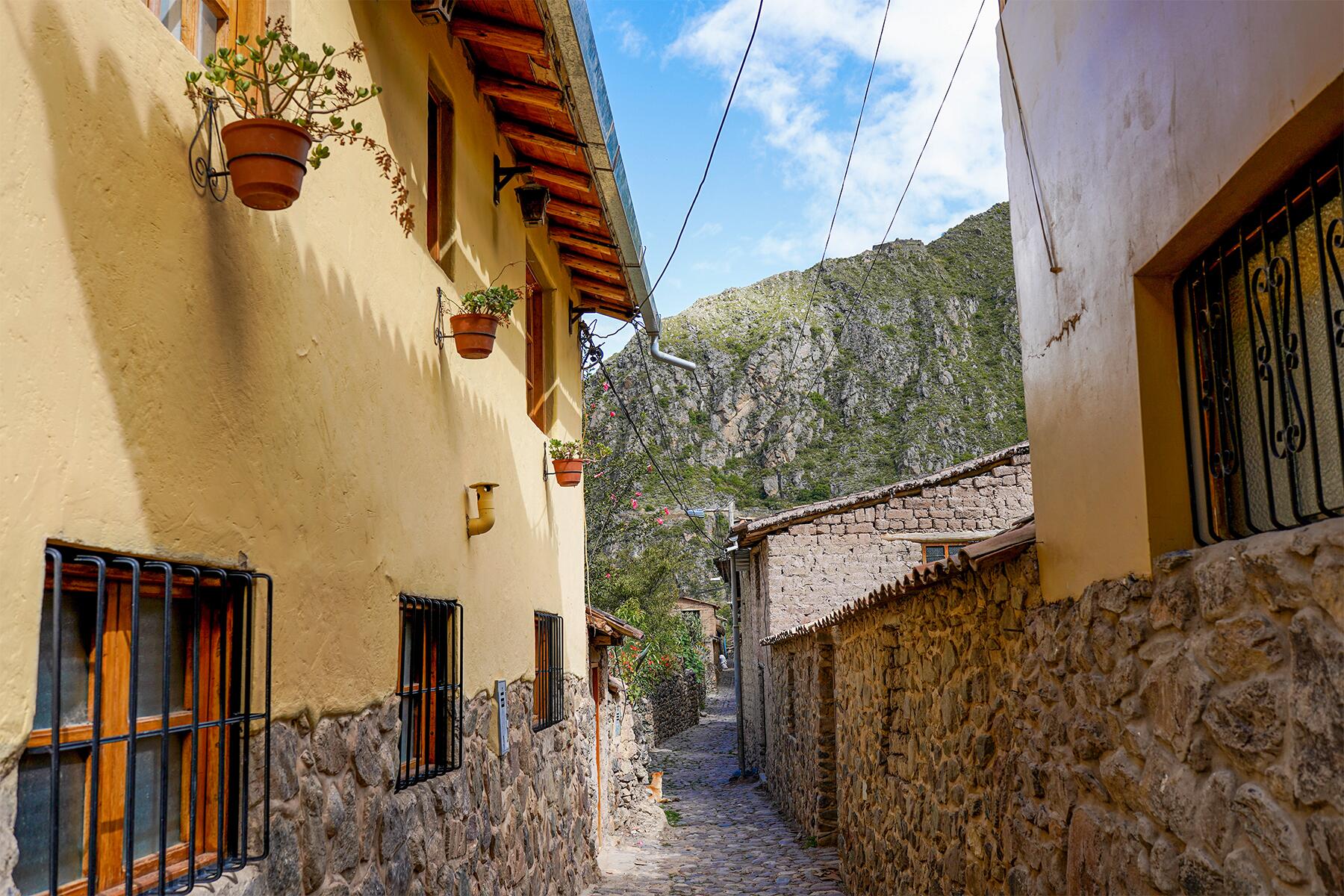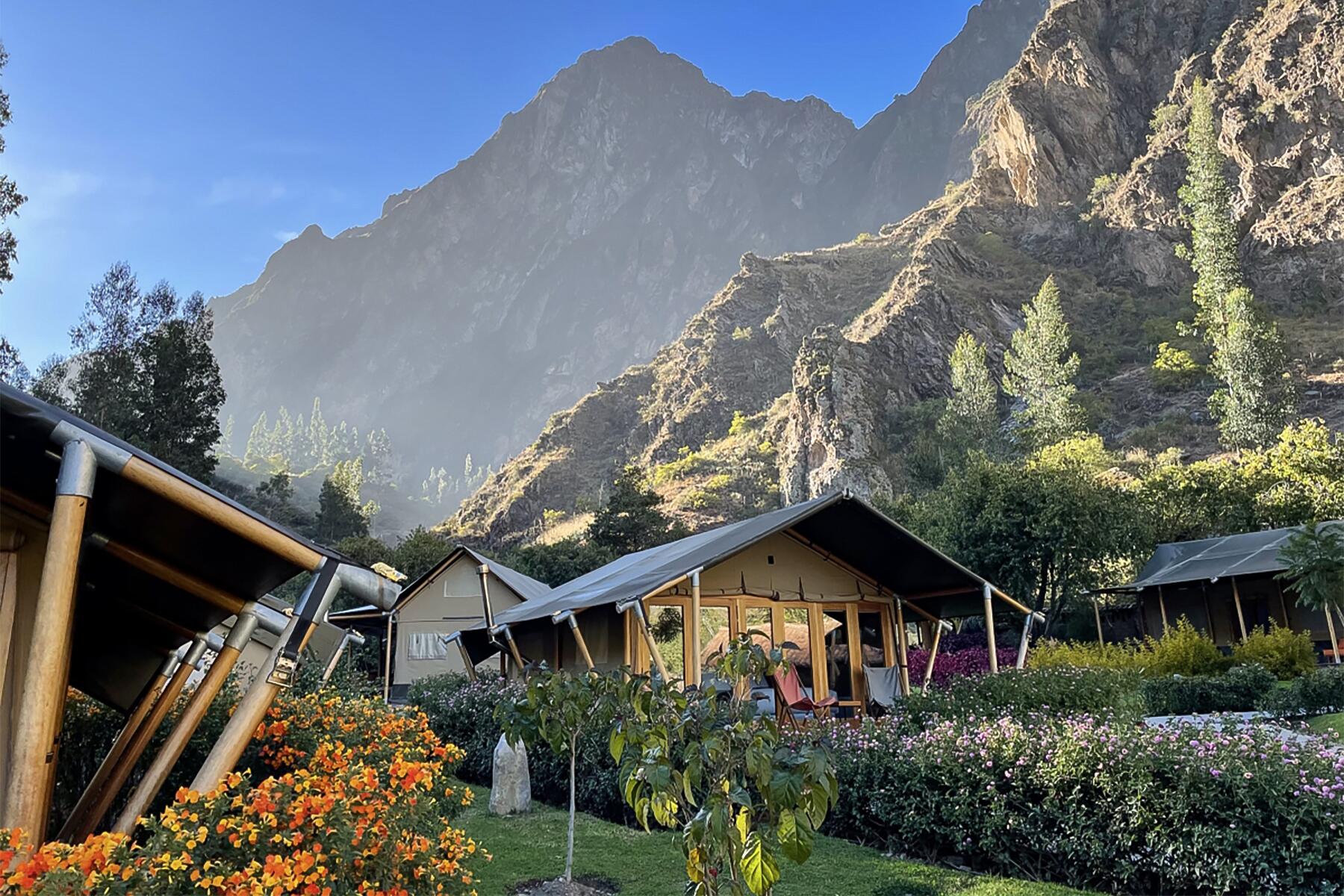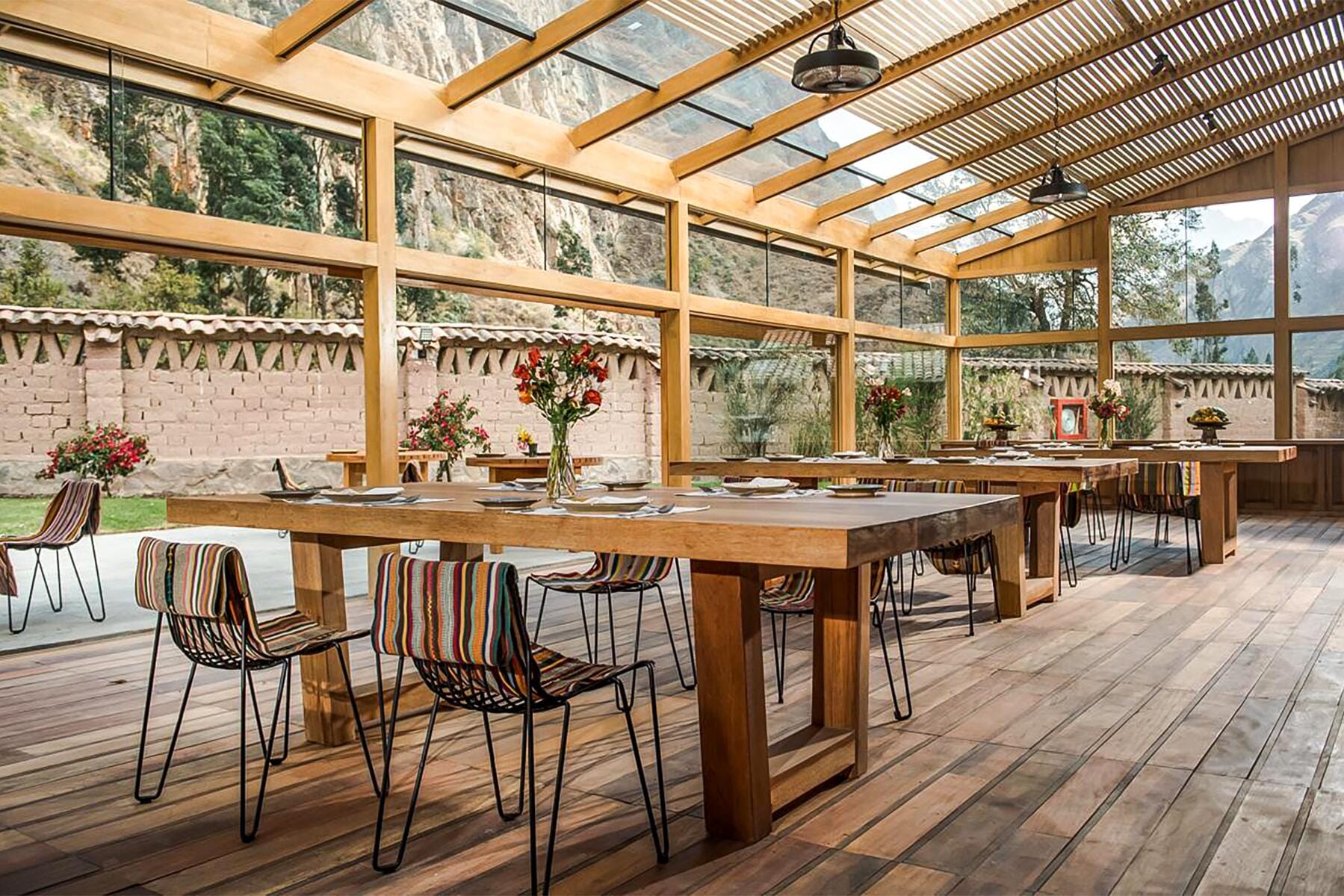All too often, tourists neglect a stunning town in the Sacred Valley.
The advice to spend some time acclimating to the environment—namely, the Andes altitude, which can cripple even the fittest, most seasoned travelers—is generally well heeded. Few travelers arrive in Cusco, Peru, 11,000 feet above sea level, and beeline for Machu Picchu, lower at 8,000 feet. Instead, they opt to hang out in charming-yet-touristy Cusco before heading out on an organized trek or to the town at the base of the great Inca city.
But even if Cusco is on your list—and it ought to be, for it’s much more than vendors standing in doorways attempting to lure tourists inside happy hour deals—there’s another town bursting with history, beauty, and wonder. There is much to discover for savvy travelers who choose to pass a few days in Ollantaytambo. Like Machu Picchu, Ollantaytambo (often shortened to Ollantay by both locals and visitors) lies in the Sacred Valley, a fertile valley in the Andes Mountains, and is considered by many to be the heart of the Valley.
Marked by adobe houses and shops, cobblestone streets, and an original stone wall dating back to the 1400s when the Inca Empire built out the village, Ollantaytambo resides along the Urubamba River. This town has long been a jumping-off point for travel to Peru’s most famous attraction. But while any of Ollantay’s hostels or no-frills hospedajes are happy to host overnight travelers holding train tickets to Aguas Calientes, where buses transport hordes of tourists up a winding mountainous road to reach the site of the great Machu Picchu, it would be a mistake to rush through this glorious stretch of the Sacred Valley.
Recommended Fodor’s Video
Relative newcomer Las Qolqas, a luxury eco-resort, is helping make this case. Opened in December 2021, Las Qolqas may just exist in the prettiest part of Ollantaytambo—or at least, it certainly looks that way from the private porches of the glamp-like accommodations when the sky’s deep oranges give way to pastel pinks and dreamy purple hues at sunset. Yet the property’s aesthetic appeal belies a greater good, which co-owner Carlos Gonzalez says is all about sustainability. I’d argue this goes hand-in-hand with slower travel, something a stay at Las Qolqas seems to wordlessly encourage.
Gonzalez, who is from Peru and has decades of experience in hospitality, says the opening of the eco-resort is about “trying to show to our community and other entrepreneurs that you can have a unique vision regardless of how you conceptualize the aesthetic of your proposal or your proposition. But we want to make a point about sustainability.”
“It’s beautiful, it’s comfortable, it’s fun,” adds Gonzalez, and it’s also keen on showcasing this part of Peru beyond the resort’s impeccable grounds.
People will always want to visit Machu Picchu, and from Ollantaytambo, it’s a fairly straightforward journey: a two-hour train ride, then a half-hour bus ride to the top, and you’re in (with a timed ticket and a three-hour maximum entry). But history buffs, bird watchers, animal lovers, and students of culture have much to see in and around town before the main event.
You don’t need a ticket to the Pumamarca ruins, which involve 13.4 km of moderate trekking during which you’re likely to cross paths with more llamas than tourists or to access the ruins seen from the village’s main plaza. The entry to the Pinkuylluna Storehouse hike requires sturdy shoes and patience to remove and add layers every few moments as you alternate between sun and shade along the path and your lungs adjust to the changing elevation.
There’s plenty to eat in the village, and avoiding the ubiquitous tourist traps is generally a good idea. Stock up on fresh fruit at Mercado San Pedro, where vendors sell grains, homemade cheese, and coffee interspersed with the produce stands. There are numerous butcher stands in the authentic market, too, if you’re staying somewhere with a kitchen and are in an ambitious mood to cook something from scratch.
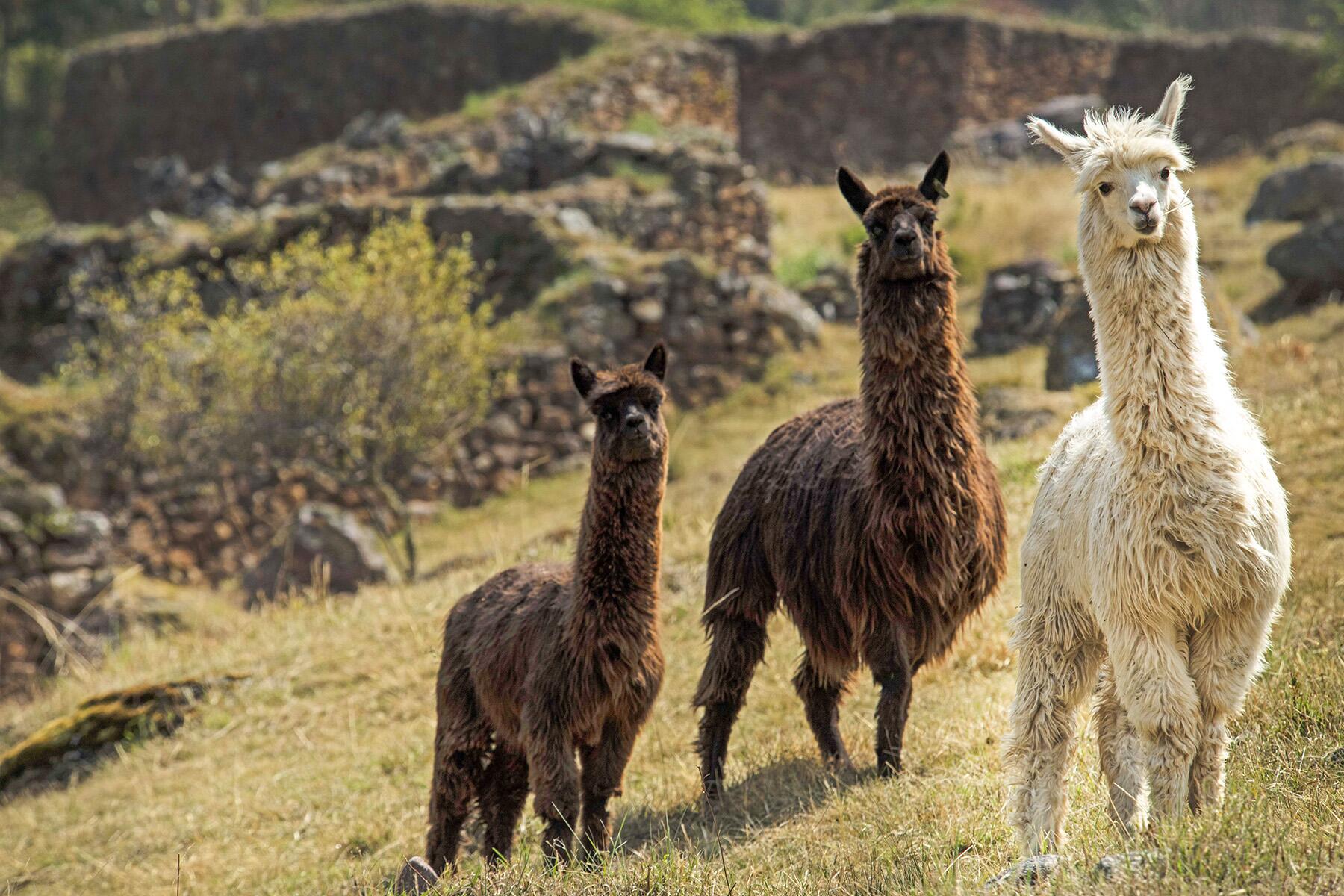
If DIYing dinner is not on the agenda, grab a table at Chuncho. This Ollantay restaurant serves traditional Peruvian fare like asados cuy (roasted guinea pig) and lomo saltado de alpaca (sauteed alpaca tenderloin), and for dessert, quinua con leche (quinoa with milk, a version of rice pudding) to the beat of live music. The restaurant at Las Qolqas, also open to those travelers not staying overnight, pays homage to traditional Peruvian staples as well (and serves only Peruvian wine, too), albeit with a slightly more refined bent.
Although the resort has only been open a short while, Gonzalez says it’s not unusual for guests to book a night or two, with a visit to Machu Picchu the impetus of the trip, but then decide to prolong their stay (availability, pending). “Las Qolqas is a place where you can enjoy quality time for yourself, but also with the people who are significant to you,” Gonzalez says. Even though he is biased, he’s also not wrong. Though arguably, it’s Ollantaytambo—at once easygoing, mysterious, and preternaturally gorgeous—which induces a certain kind of self-reflection and curiosity over what it means to travel now.

